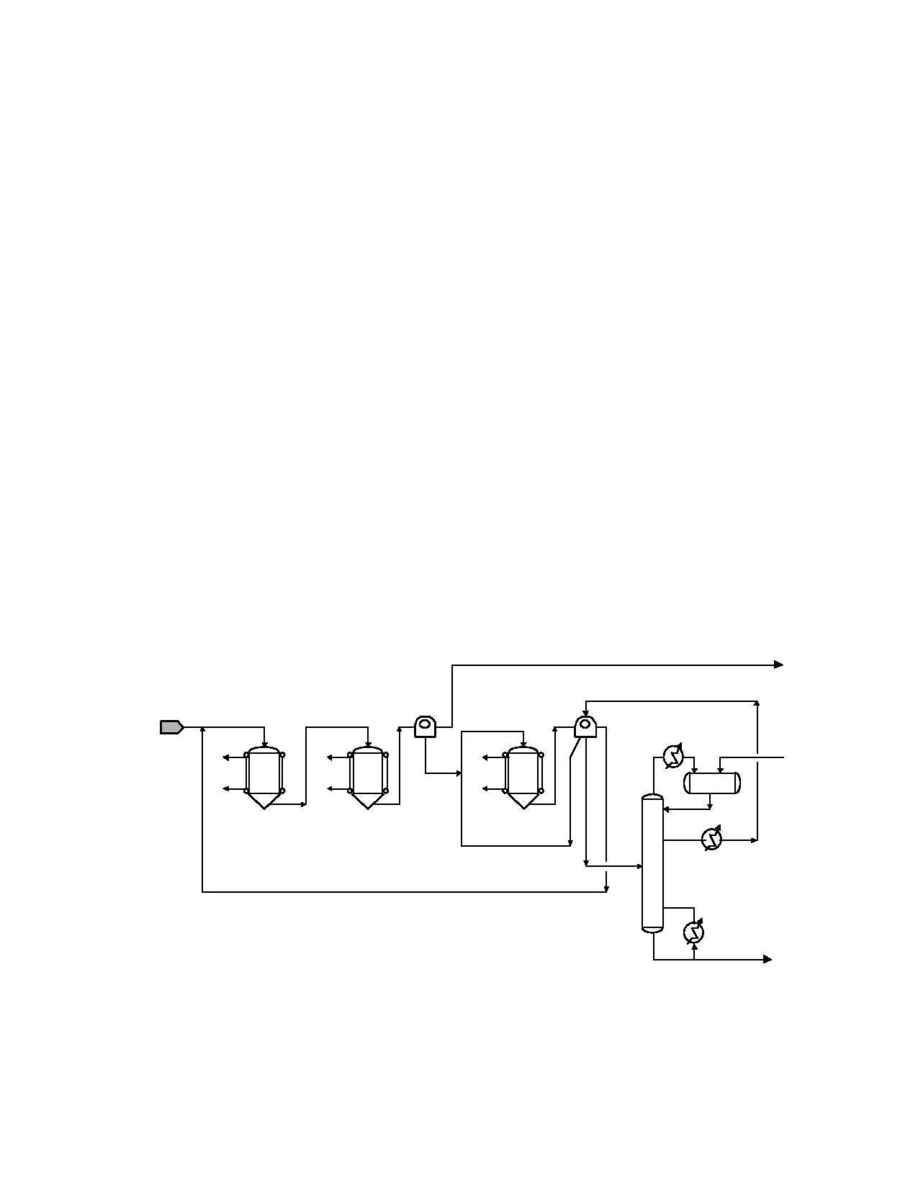Kolmetz.com CMAI 2000 Joe Page 7

To complete the analysis of xylenes-based processes, we will look at multi-stage
crystallization and how this system works to recover and purify paraxylene.
The C
8
aromatic isomers are difficult to separate by distillation because of their close
boiling points. Orthoxylene can be separated by intense fractionation, and ethylbenzene
can be largely removed by superfractionation. The para- and meta- isomers cannot be
separated by classical distillation. However, because paraxylene has a markedly higher
freezing point than the other isomers, crystallization can be used to facilitate its
separation.
Physical properties of the C8 aromatic isomers
Normal Boiling Point, °C
Freezing Point, °C
Ethylbenzene
136.0
-95.0
Paraxylene
138.3
+13.2
Metaxylene
139.1
-47.9
Orthoxylene
144.3
-25.2
In the crystallization process (Figure 4), the mixed xylenes are cooled and then charged to
the first stage crystallization which consists of one or two crystallizers operating in series
depending on feed composition. The first stage crystal slurry flows to a continuous
centrifuge, where crystals of 80 90% paraxylene are removed from the filtrate. First
stage filtrate is exchanged against the fresh feed, and then leaves the unit as feed for a
xylene isomerization unit.
C
8
aromatics feed
from Xylene Rerun
Column
Refrig.
Centrifuge
Toluene
Wash
Centrifuge
Refrig.
Refrig.
No. 1
Crystallizer
First Stage
No. 2
Crystallizer
First Stage
Crystallizer
Second Stage
Paraxylene
Toluene
Splitter
Screen Effluent
Recycle Filtrate
First-stage filtrate
to Xylene isomerization
Paraxylene
Product
cw
cw
Make-up
Toluene
Figure 4. Crystallization process for paraxylene recovery
The first stage crystals are melted and then charged to a single second stage crystallizer
which operates at -18°C to 0°C depending on the feedstock and desired purity. The
combined crystal slurry flows from the crystallizer to a second stage
